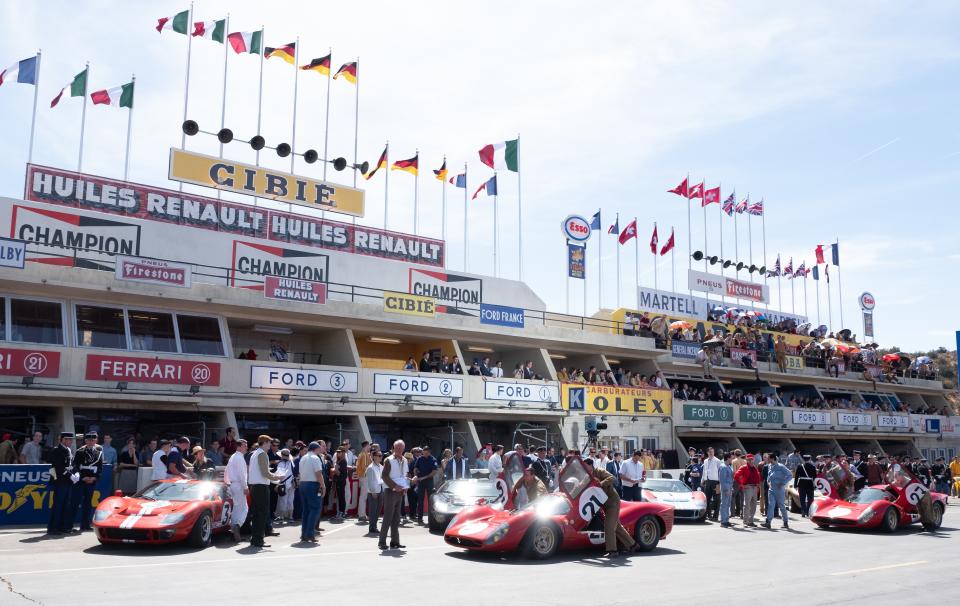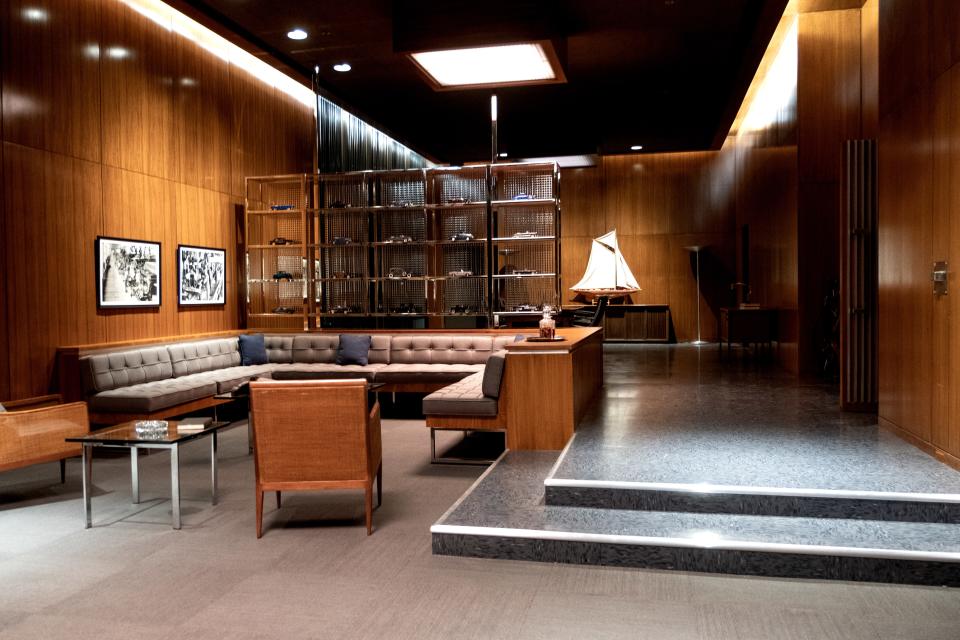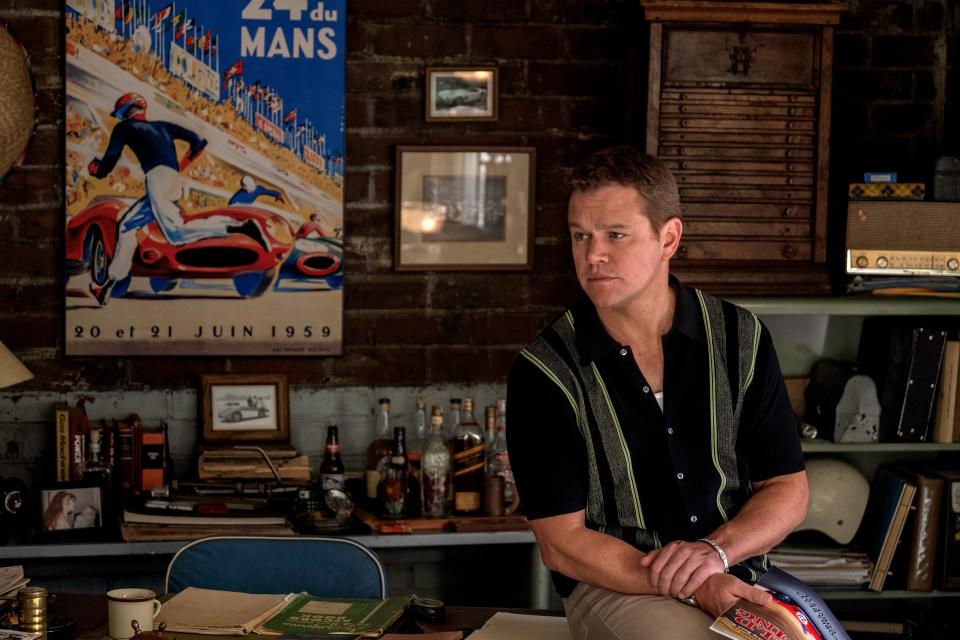Car Enthusiasts Will Appreciate Ford v Ferrari ’s Big-Budget Sets
When production designer François Audouy set out to build the world of Ford v Ferrari, he had one chief concern: “You don’t want to get calls from the automobile police…there are super hard-core fans because the events in this movie are so beloved by racing fans. They’re part of motorsports lore.” Director James Mangold’s period film is an underdog racing epic set in 1966, the year Henry Ford II (Tracy Letts) set out—with a healthy helping of hubris—to build a race car that could beat Ferrari at the 24 Hours of Le Mans. But the beating heart of the film is the friendship between legendary auto designer Carroll Shelby (Matt Damon) and the scrappy driver Ken Miles (Christian Bale), who teamed up to engineer and drive a GT40 that could make it through Le Mans. The film had a $100 million budget, and it’s being billed by critics as well worth the splurge.

The hype added pleasure and pressure for Audouy, who was tasked with the “detective work” of tracking down the details and artifacts to bring these iconic events to life. “My job was to recreate a world in a way that the audience didn’t know it was synthetic,” he says. “But this was a nice, big, old-time Hollywood production, the way they used to make them back in the day.” Among the sites Audouy recreated: the Ferrari headquarters in Maranello, Italy, whose King Kong–esque gates they rebuilt “brick by brick,” and the famous Glass House Ford headquarters, which they staged in the Los Angeles Times building.

To recreate the Ford River Rouge factory, they built three full assembly lines in an L.A. warehouse, complete with 21 vintage Ford Falcons they bought, stripped down, and placed on the assembly lines in varying states of manufacture. They recreated numerous race tracks—Willow Springs, Daytona—and of course Le Mans, which was shot in Southern California as well as two separate locations in Georgia, because, Audouy says, Georgia’s landscape was the best match they could find for the countryside of central France.

But the pièce de résistance set, Audouy says, was the 1,000-foot bunker that once sat at the finish line of Le Mans and was torn down in the 1980s. His team rebuilt the entire three-story structure, with the mechanic pits and hallways behind them, the VIP boxes above, the grandstands above those, along with a full Wide World of Sports TV broadcast booth and a print-journalism office. “It was a one-to-one perfect match,” Audouy says. “It was a once-in-a-lifetime opportunity to rebuild something like that in such detail. I’m incredibly proud of it. We painstakingly designed every single sign and light bulb and doorknob on this 15-acre finish line set. I bought, like, 50 doorknobs from France because I couldn’t find these cast aluminum industrial doorknobs, and they look so unique and foreign! You just can’t find them in the U.S. Everyone thought I was crazy.”

But Audouy’s most encompassing contribution may be even more subtle than doorknobs. Audouy and Mangold, who have worked together on films like Logan and Wolverine, didn’t want to use subtitles for locations. So, Audouy says, “I spent a lot of time coming up with a visual-form language and color scheme for each location in the movie. In Michigan it was the cool, steely blues and rectilinear mid-century architecture. In Italy the Maranello headquarters had very earthy tones, and we were really playing off of the Ferrari reds of the cars. In Florida the colors are more sun-bleached and pastel.”

Still, iconic car sights and sweeping color palettes aside, “At its heart it’s a character movie,” Audouy says. “It was most important to give the characters backstories with these sets.” Carroll Shelby was a Texan and a WWII flight instructor who moved to L.A. to sell tires before becoming a Le Mans–winning driver (he had to retire after developing a heart condition), and Audouy says they layered his Venice, California, shop with clues to his “hands-on” personality, like a drafting table. They played up his Texas roots with fun touches like a stuffed armadillo.

And Ken Miles’s family home, which Mangold wanted to overlook his L.A. garage, was surprisingly one of the most elaborate sets in the film. “We ended up taking over an entire neighborhood in Highland Park and completely changing it to be 1960s period,” Audouy says. “There was a whole strip mall in the background with a grocery store and a launderette. And we had to strip out this garage and completely gut the house they lived in.” Ken Miles was British—a naturalized citizen who came to the U.S. after serving as a tank commander in WWII—and because of that, Audouy felt a kinship with him. “My mother is actually English, so I could really relate to his character,” Audouy says. “I put things in his home that I remembered from my own childhood, like a jar of Marmite. The Brits can’t go anywhere without Marmite. There’s also a team scarf from his home soccer club in England, and his jazz-record collection we thought he’d be into. Lots of little nuggets like that.”
Originally Appeared on Architectural Digest

